SCIENTIFIC CONTEXT
West Africa is characterized by well defined strong meridian surface
gradients, illustrated here with a map of June 1996 surface
albedo
(Fig 1). This feature is coupled to well defined atmospheric
circulations
(Fig 2), such as the African easterly jet (AEJ) which develops over
West
Africa during the monsoon season typically between 10 & 15° N.
The location of the AEJ itself is strongly constrained by meridian
gradients
of surface air temperature and moist static energy (Thorncroft
&
Blackburn 1999). More genrally, interannual variability of the monsoon
is acompanied by changes in these basic structures (Fig. 3). Synoptic
variability
over West Africa during the monsoon season in turn is dominated by
African
easterly waves (AEW), which are closely linked to the AEJ (Burpee
1972).
Then, the structure and variability of these basic large-scale features
involve strong and complex interactions with soil, surface, turbulent
and
convective processes, occurring on different space and time scales
(Taylor
and Lebel 1998, Diongue et al. 2002, see also Parker et al. 2005 for an
investigation of the diurnal cycle of the monsoon flow). Finally, the
West
African monsoon exhibits specific seasonal variations, with in
particular
an onset characterized by an abrupt latitudinal shift (~5°N)
occurring
typically at the end of June (Sultan and Janicot 2003), to be compared
to a more progressive latitudinal retreat (Fig. 3).
While current (re-)analyses are able to reasonably capture the dynamics
of these large-scale dynamical features (Reed et al. 1988, Thorncroft
et
al. 2003), with limitations though (e.g., Diongue et al. 2002,
Redelsperger
et al. 2002), the extent to which large-scale models are able to
properly
reproduce these observations remains unclear. Large-scale models appear
to be able to generate AEW-type synoptic variability (Ceron and
Gueremy
1999, Chauvin et al. 2005), although quantitative aspects are likely to
vary among models. Features such as the monsoon jump have been shown to
be sensitive to the treatment of moisture processes in convective
parametrizations
(Fig. 5, Grandpeyx et al 2004). Similarly, the simulated diurnal cycle
of moist
convection typically exhibits a phase shift of a few to several
hours
compared to observations, which may affect the large-scale modelling
over this region.
OBJECTIVE
The objective of the present exercise is therefore to get a more
precise
view concerning the ability of large-scale models to simulate these
fundamental
features of the West African monsoon. To do so, we follow an approach
initially
proposed by Siebesma et al. (2004), that was applied to the atmospheric
tropical circulation over the Pacific Ocean. It consists in defining an
appropriate vertical cross section over which the large-scale
atmospheric
models are compared to observational products (including satellite and
re-analyses datasets).
According to what was summarized above, we decided to focus on a
meridian cross
section over West Africa .
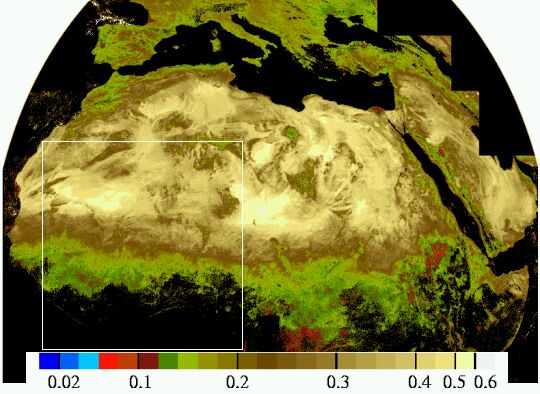 |
| Fig1: albedo for June
1996 [Source:
EUMETSAT/JRC] |
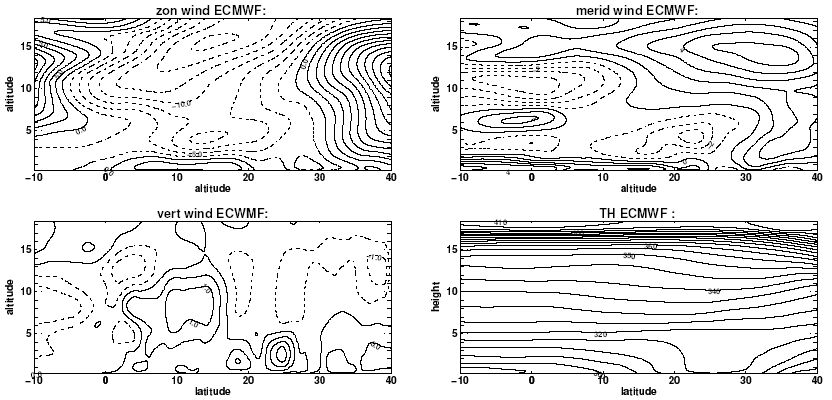
|
| Fig 2: [10W,10E]
2000-2001 July mean
latitude height diagrams of zonal wind (top left) - Disoline
= 2.5 m/s, meridian wind (top right) - Disoline
= 1 m/s, vertical wind (bottom left) - Disoline
= 0.5 mm/s, and potential temperature -Disoline
= 5 K. [Source: Peyrillé et al. (2005)] |
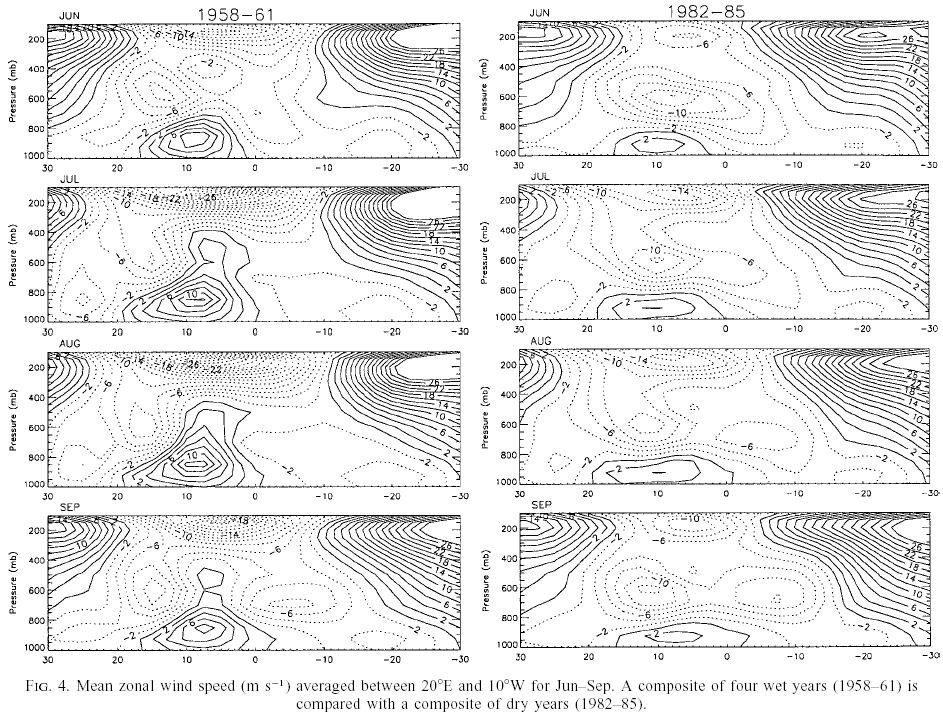 |
| Fig 3:
[Source: Grist and
Nicholson (2001)] |
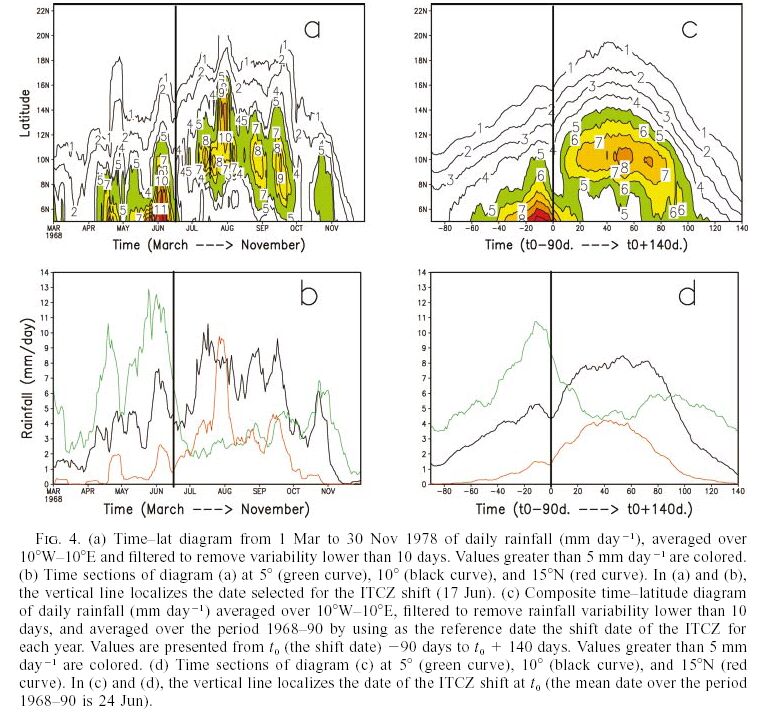
|
| Fig 4:
[Source: Sultan and
Janicot (2003)] |
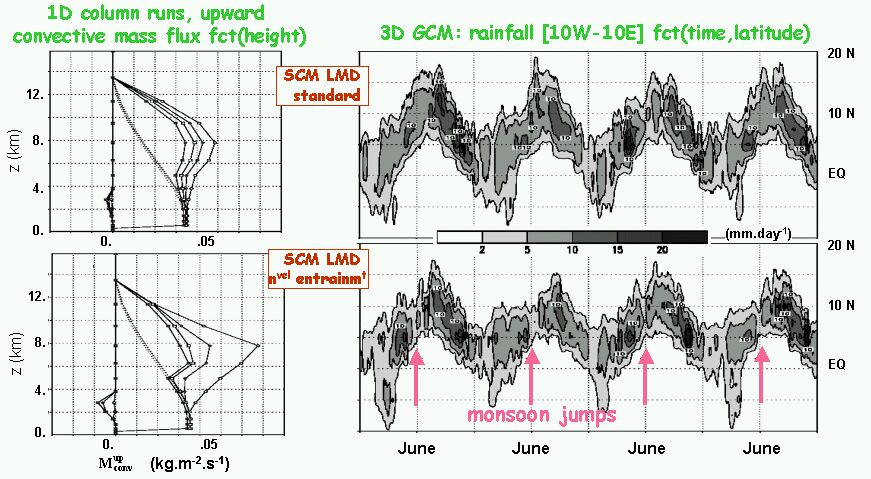
|
Fig 5: [Source:
J.-Y.
Grandpeix
et al. (2004)]
|





